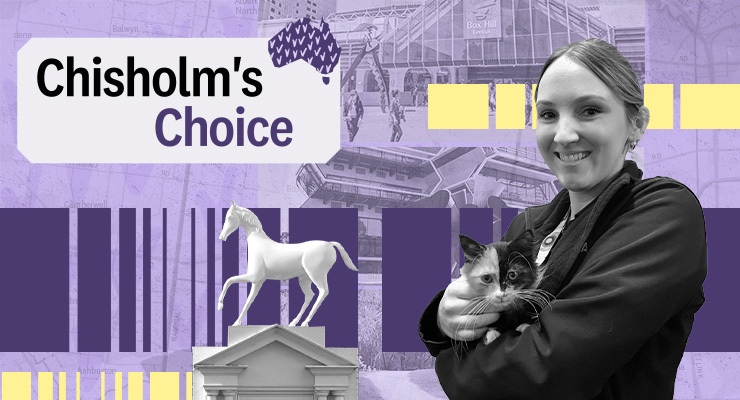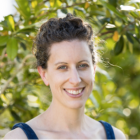
In this election series, Crikey teams up with the University of Melbourne’s Centre for Advancing Journalism to delve into the heart of federal marginal seat Chisholm, in the southeastern suburbs of Melbourne, to see what people are thinking about in the lead-up to the poll. This first piece sets the scene for what is shaping up to be one of the key battlegrounds for the election. Find more of the series here.
Among the most marginal electorates in the country — held by Hong Kong-born Liberal Gladys Liu on a wafer-thin 0.5% — Chisholm is squarely in the spotlight this election.
The prime minister had already dropped by twice before the official campaign kicked off, announcing a manufacturing deal for next-generation vaccines and plans for a whiz-bang new medical research facility. Both he and Labor leader Anthony Albanese will be back.
From its inner boundary, the sprawling seat takes in sleepy enclaves around the bustling metropolis of Melbourne’s southeastern suburbs, known for its busy arterial roads, cacophony of billboards and utilitarian-looking office blocks.
Exit the freeways and the streets are lined with oaks, planes and eucalyptus. Box Hill marks its bustling commuter centre, with umami smells, bubble teas and Asian grocers.
“If you’re thinking about the landscape of Victoria, it’s probably the key battleground seat,” Paul Strangio, politics professor at Monash University, says.
Economic powerhouse
The electorate’s 77 square kilometres are proudly diverse — local leaders frequently boast about its cultural credentials. It’s home to a greater share of residents born in China, India, Malaysia, Sri Lanka and Greece than the national average, ABS data shows. It’s also an economic powerhouse taking in the health, education and industry clustered around Monash University, Victoria’s second-largest employment hub after the CBD.
The area’s diversity reflects waves of migration, initially from post-war Europe then from China, India, Vietnam and Malaysia. Monash and Deakin universities bring high concentrations of international students.
Census data show half of Chisholm households speak a language other than English at home, with the largest share — 15% — speaking Mandarin. Compared with the national average, the electorate has more professionals, is slightly younger, less religious and more educated.
“We always proudly say that 50% of our residents were born overseas — which is astronomical,” Monash mayor Stuart James says.
The Liberals narrowly held the seat at the past two elections. In 2016, Chisholm was the only electorate in the country to change from Labor to Liberal, under candidate Julia Banks. In 2019, the party held on by 1090 votes, after preferences.
Labor will be targeting it hard, Strangio says. Its candidate is Dr Carina Garland, previously an assistant secretary at Victorian Trades Hall Council and reportedly a surprise pick.
Recent redistribution changes shunted Chisholm’s boundary southwards, making the seat more marginal, according to ABC election analyst Antony Green, adding in parts of Labor-leaning Clayton and Liberal-inclined Wheelers Hill.
While campaigning has been fierce in electorates such as Kooyong and Goldstein, courtesy of challenges to high-profile Liberal members by well-resourced Climate 200 independents, in Chisholm there’s no sign of a teal-coloured disruptor as the campaign begins. Indeed, while signage has become a flashpoint elsewhere, as the campaign kicks off in Chisholm, there are few visual clues of the approaching election.
At the RSPCA headquarters, a landmark on the Burwood Highway, team leader Sophie Thomas sees all kinds of locals coming in to adopt a pet. “I love working in this area … it’s quite a green area. People are always out with their pets, their dogs,” she says.
Gardiners Creek is popular with dog walkers, whose oodles and labs seem to enjoy dipping their toes in the water. It’s one of a handful of creekside trails that add to the electorate’s green, leafy feel along with parks, street trees and, of course, backyards.
Nonetheless there are concerns the suburban dream exemplified by TV show Neighbours — filmed a few streets outside Chisholm’s boundary — that drew many to the area is eroding.
“It used to be the last bastion of homes with backyards. But that’s rapidly disappearing,” says Michael Crichton, a retired school teacher and long-time presenter on local community radio station 3WBC.
Outbreaks of high-rise residential and commercial development, and the increasing density of dwellings, is an issue that “bugs most people”, he says.
Though suburbia is often synonymous with security and comfort, that’s not the case any longer, says Amaroo Neighbourhood Centre coordinator Janine Saligari. She sees many households struggling with the rising cost of living, the lack of affordable housing and access to public transport. “Not everyone has a car, and people are struggling to afford to run their car,” she says.
Demand for emergency food relief offered during lockdowns has unexpectedly continued, she adds.
Housing stress affects around 21% of households renting in Chisholm, an ABC analysis found. The recovery from COVID-19 has also pushed mental health and domestic violence services to the limits, and has left local businesses struggling with staff shortages.
Ahead of the election, a concerted push for federal money for more mental health services and social housing formed part of a policy pitch from Melbourne’s eastern councils, including Monash and Whitehorse. Other demands included employment programs, public and active transport initiatives and renewable energy to tackle climate change.
The advocacy effort has already gained bi-partisan commitment for a new Headspace youth mental health service in Box Hill. Climate action, integrity and social respect are also top issues.
John Malvestuto and a group of locals launched community news website Eastsider News in 2020 following News Corp’s decision to stop printing the Whitehorse Leader.
“Something was missing, the whole sense of being able to share local stories,” he says. With a few thousand subscribers so far, the Eastsider editors are building local advertising with plans to print future editions.
Malvestuto will soon be putting a list of questions reflecting readers’ concerns, including climate change and integrity, to all candidates.
Back at the RSPCA, the building capable of housing hundreds of animals is reaching capacity. Some pandemic pets are coming back to the shelter as people return to the office, and “kitten season” is bringing an influx of as many as 15 each day.
It’s election season, too. Sure to bring an influx of politicians to the marginal seat of Chisholm.








Outbreaks of high-rise residential and commercial development, and the increasing density of dwellings, is an issue that “bugs most people”, he says.
Though suburbia is often synonymous with security and comfort, that’s not the case any longer, says Amaroo Neighbourhood Centre coordinator Janine Saligari. She sees many households struggling with the rising cost of living, the lack of affordable housing and access to public transport. “Not everyone has a car, and people are struggling to afford to run their car,” she says.
Fascinating. Sprawling low-density urban development makes it almost impossible to live comfortably without owning a car. You cannot have it both ways.